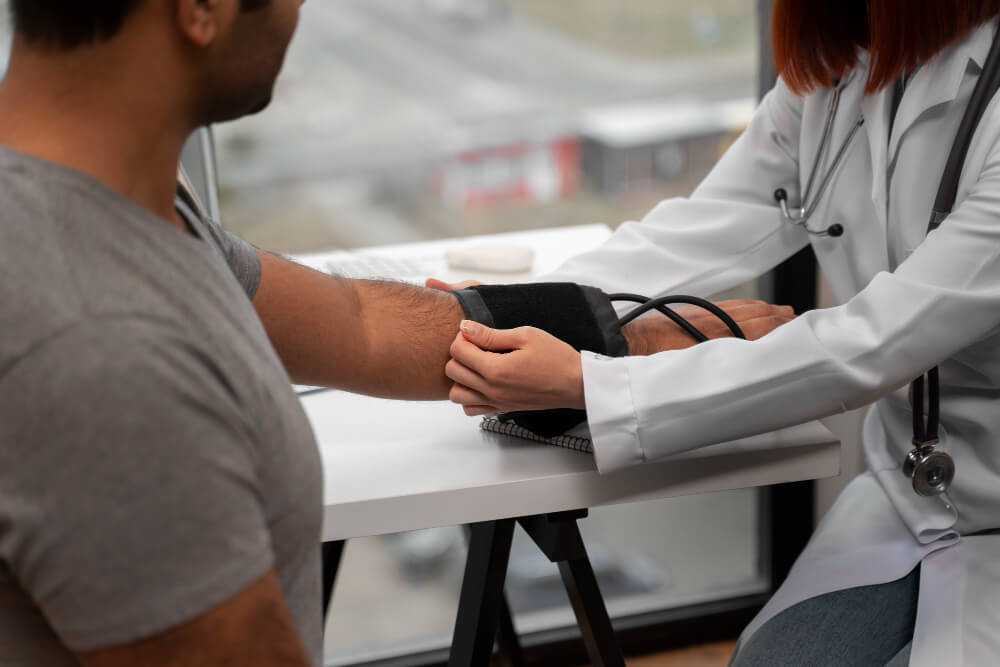Fit for the Job: A Guide to Work Physicals and DOT Exams
A new job brings a sense of accomplishment and the promise of a fresh start. However, before officially diving into your new position, many employers require you to undergo a work physical. This seemingly routine procedure plays a vital role in workplace health and safety for both the employee and the employer. This guide explores work physicals and Department of Transportation (DOT) physicals, ensuring a clear understanding of these essential employment processes.
Ensuring Workplace Fitness: The Purpose of Work Physicals
Screening for Health Concerns:
Work physicals serve as a preventative measure, allowing employers to identify potential health risks that might impact an employee’s ability to perform their job duties safely. Early detection of health concerns can lead to timely intervention and management, ultimately promoting a healthier workforce and a safer work environment.
Compliance with Regulations
In some industries, work physicals are mandated by regulations to ensure employees possess the physical capabilities required for specific positions. These physicals often address tasks that could pose a safety risk if not performed by someone in good physical health.
Creating a Health Baseline:
Work physicals establish a baseline for your health at the start of your employment. This information can be valuable for future health assessments and monitoring potential health changes over time.
Understanding the Work Physical Process
What to Expect During a Work Physical:
The specific components of a work physical can vary depending on the employer, industry regulations, and the job requirements. However, some common components include:
- Medical History Review: You’ll discuss your past and present medical history with the healthcare professional conducting the physical.
- Physical Examination: This may include checking your vital signs (blood pressure, heart rate, temperature), vision, hearing, and overall physical health.
- Urinalysis or Blood Tests: In some cases, additional tests like urinalysis or blood tests might be performed to screen for specific health conditions.
- Review of Immunization Records: Employers might verify your immunization records to ensure you’re up-to-date on essential vaccinations.
- Discussion of Job Requirements: The healthcare professional might inquire about the physical demands of your new position to ensure your fitness for the role.
- Recommendations and Clearances: Following the physical, the healthcare professional will provide recommendations based on the assessment and grant clearance for you to begin working.
On the Road to Safety: DOT Physicals Explained
Qualifications for Commercial Drivers:
The Department of Transportation (DOT) mandates specific physical qualifications for individuals who operate commercial motor vehicles (CMVs) such as large trucks, buses, and passenger vans. To maintain a Commercial Driver’s License (CDL), drivers must pass a DOT physical periodically.
Components of a DOT Physical:
DOT physicals are more comprehensive than standard work physicals and focus on ensuring a driver’s physical fitness to operate a CMV safely. Here’s what you can expect during a DOT physical:
- Vision Testing: DOT physicals have stricter vision requirements than standard eye exams, ensuring drivers possess adequate visual acuity, peripheral vision, and color perception.
- Hearing Test: Drivers must demonstrate the ability to hear conversational speech within a specific distance, with or without a hearing aid.
- Urinalysis: A drug screen is typically included to check for the presence of illegal substances.
- Blood Pressure Check: DOT physicals have specific blood pressure thresholds drivers must meet to ensure cardiovascular health is suitable for operating a CMV.
- Physical Examination: The examiner will assess your overall physical health, including your range of motion, strength, and neurological function.
- Diabetes Management: Drivers with insulin-treated diabetes have specific requirements for maintaining their CDLs and might require additional assessments.


